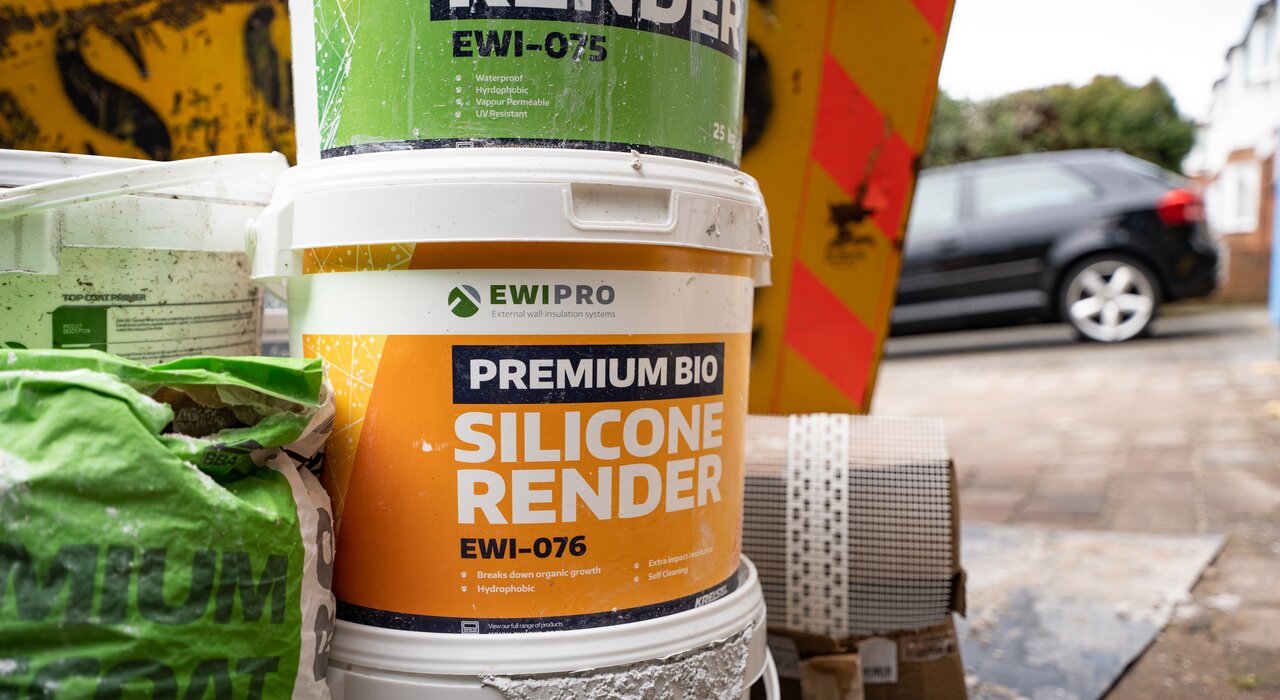
As homeowners and building professionals continue to seek out durable and aesthetic materials for their projects, silicone render has been garnering increasing attention. This modern rendering solution promises long-lasting weather protection and a wide range of finishes. However, is silicone render truly as good as it's claimed to be? Let's delve deeper into its properties, benefits, and potential drawbacks.
What is Silicone Render?
Silicone render is a type of through-colour render. As such, it retains its colour even when the surface is chipped or scratched. It's a modern solution that offers long-lasting weather protection for your building and a seamless aesthetic look. Silicone render is mixed with water-repellent silicones that provide a high water-resistance quality. Therefore it's a desirable choice for areas prone to heavy rainfall or damp conditions. We refer to silicone render as a thin-coat render which is because of the application stage. The thickness of the application will always match the grain size selected. Therefore, if you chose a grain size of 2mm, the topcoat will be 2mm thick.
The benefits of Silicone Render
Silicone render is highly water-resistant, meaning it can withstand the rigours of harsh weather conditions, preventing the ingress of water into your building. This quality can help keep your home dry and prevent issues such as dampness and mould. Therefore, the longevity of the system is enhanced.
Despite being water-resistant, it is also breathable. This might seem contradictory. However, it means that while rain and external moisture cannot penetrate the render, any moisture trapped inside the wall can escape. This ability to 'breathe' helps prevent internal condensation and damp issues, contributing to a healthier living environment.
Silicone render is renowned for its self-cleaning abilities. Thanks to its smooth surface, dirt and pollutants find it difficult to stick. Rainfall will accumulate into droplets and often wash away any accumulated grime. This keeps your building looking fresh and clean without much need for manual cleaning.
Available in a wide range of colours and finishes, it allows for creative freedom in designing the exterior of a building. Whether you prefer a smooth or textured finish or a vibrant or neutral shade, you'll find something to suit your taste. It can also be used with stencils to create brick slips or wood effect render.
EWI Pro Silicone Renders
EWI-075
Silicone Render is our flagship silicone-based render. It is breathable, polymer-modified and renowned for being long-lasting and aesthetically pleasing, making it a classic render choice for homeowners and
businesses alike. Due to its hydrophobic properties, the render has great self-cleaning capabilities, increasing its resistance to dirt and biological growth. Therefore, once installed, Silicone Render requires minimum upkeep, further positioning itself as a customer favourite. Silicone Render comes in grain sizes: 0.5mm, 1mm, 1.5mm, 2mm, and 3mm. It is also available in thousands of colours.
EWI-076
Premium Bio Silicone Render is one of our leading silicone-based coloured renders, offering advanced mechanical resistance and UV protection whilst maintaining elasticity and durability. Its advanced self-cleaning agents work to actively attack and break down organic growth. As such, it is ideal for buildings in areas of high vegetation. Also, the silicone technology of Premium Bio Silicone Render actively helps it to retain its appearance, even in the most trying conditions.
EWI-077
Nano Drex Silicone Render is our most advanced thin-coat Silicone Render, offering unmatched performance regarding flexibility, breathability, and hydrophobic properties. EWI-077 flexes with a building’s natural movements and repels water when encountered with rain. Formulated using nanotechnology, EWI-077 also actively prevents problems with organic growth on the external walls of your home. Therefore, no future issues with dampness or mould crop up. Moreover, Nano Drex Silicone Render is ideal for use in areas that are highly exposed to organic matter.
EWI-040
Our most popular hybrid silicone render, Silicone Silicate Render offers great performance, value, and versatility. Providing the key benefits of a thin-coat render, combined with the silicone render technology’s advanced self-cleaning properties, EWI-040 is perfect for creating a classic finish that will maintain its brilliance in the long term. Available in a range of grain sizes, including 1mm, 1.5mm, 2mm and 3mm, EWI-040 can be formulated to your desired textured finish.
Any downsides?
Like any building material, silicone render is not without its drawbacks. It tends to be more expensive than some other render types, so budget considerations may come into play. It may also require some touch-ups or repairs in the face of extreme weather conditions or physical damage.
Furthermore, it is crucial to compare Silicone Render to other forms of render. Monocouche render, on the other hand, is a type of through-coloured render. This means the colour is part of the mix, eliminating the need to paint the surface after application. It's weather-resistant and has good water-repelling properties. Because it doesn't require painting, maintenance costs and efforts are reduced. Monocouche is typically applied in two coats and doesn't require a primer, speeding up application times. It's also resistant to abrasion and has good impact resistance. Though it's more expensive than some traditional options, monocouche render is generally less expensive than silicone render.
Lastly, lime render is traditionally used on older buildings and is a more eco-friendly option compared to other types. It's a good choice for period properties and conservation projects due to its high breathability, which allows water vapour to escape from the building, making it suitable for older, solid-wall properties. Lime render is more flexible than cement-based renders, reducing the risk of cracking. The main advantage of lime render is that it is a more sustainable material, making it suitable for eco-conscious projects. However, applying lime render can be more time consuming and requires more skill, adding to the labour costs. In terms of material cost, lime render is usually cheaper than silicone render.
What do you think of Silicone Render? Is it any good? Let us know below and get the discussion started.

